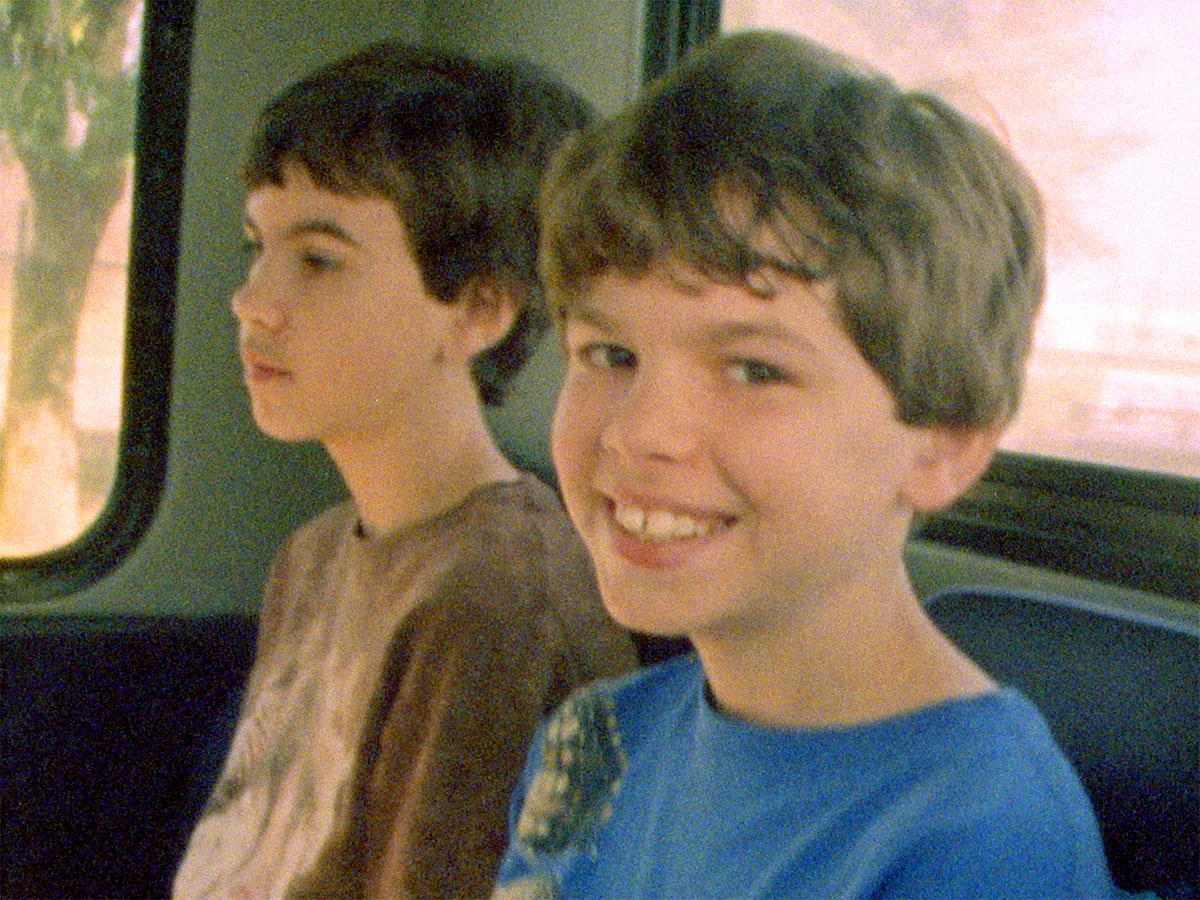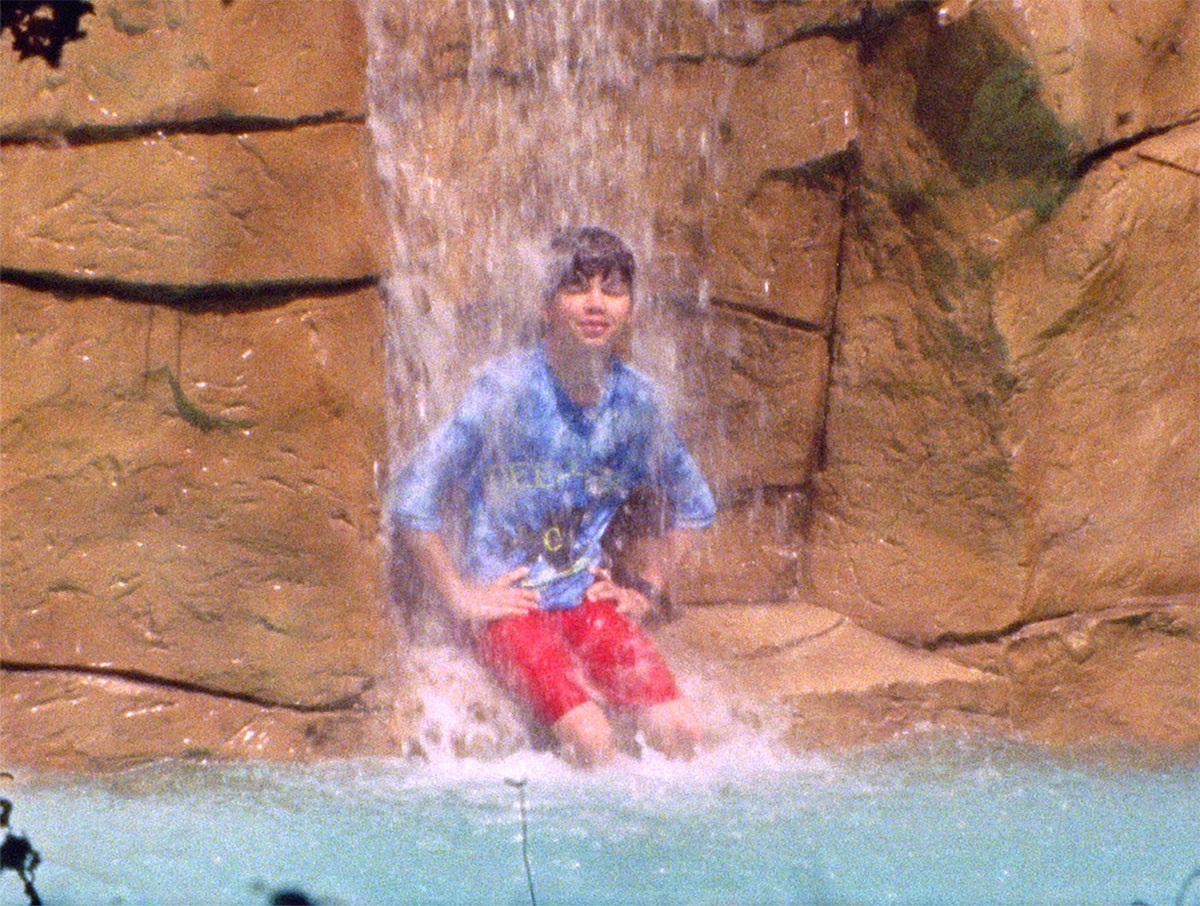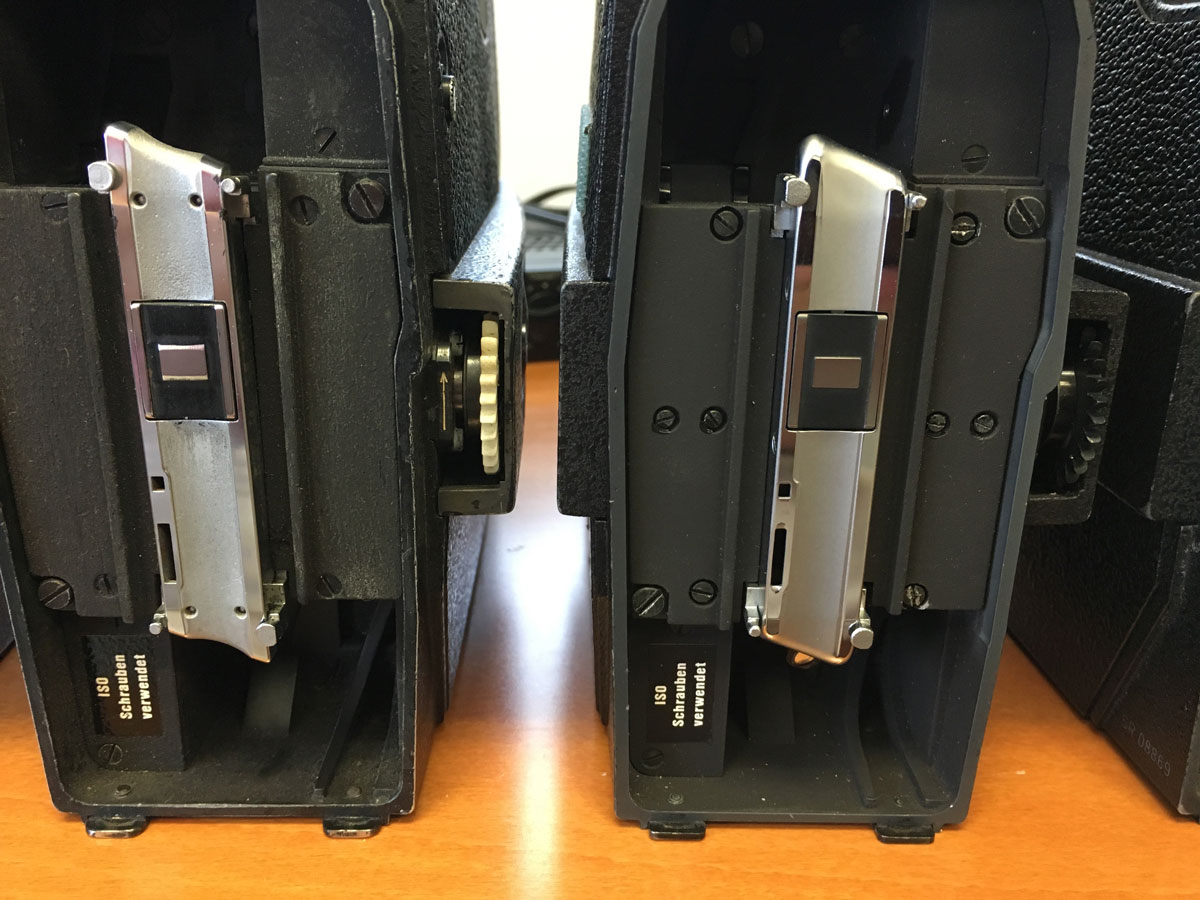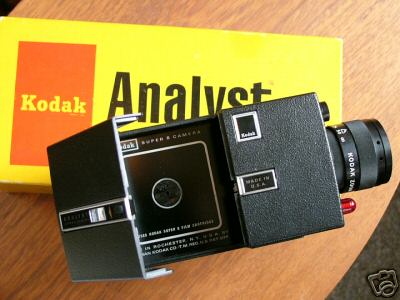-
Posts
2,247 -
Joined
-
Last visited
Posts posted by Will Montgomery
-
-
If you're a hobbyist or control the workflow on your entire project, Ultra16 is a great option...especially on cameras like the Scoopic where moving the lens takes herculean effort.
More and more modern film scanners have no problem with it. Spirits were the biggest no-go on Ultra-16 for many years and since they were very common and high-end at the time, Super 16 was the way to go for most pros.
If you had a choice between Super 16 and Ultra 16 I'd still pick Super 16 as a format but I love Ultra16 on my Scoopic. I'll be shooting a lot with it this summer.
What us 16mm filmmakers need is cheaper/lower cost 1.3x anamorphic lenses. That would solve the 2.35:1 aspect ratio issues and retain the field of view.Amen.
-
Great job repurposing those lenses.
As Dom said, it looks nothing like Super 8 but if you are trying to simulate Super 8 for fun, you can probably find some plugins that will get you a little closer. Especially some grain overlays.
Here are some Super 8 stills from a really bad Super 8 camera for reference...note the completely dirty gate on the 2nd one. I'd like to say that was a creative choice but more like I got lazy and didn't CHECK THE GATE!!!


-
Hand inspection of film canisters has NEVER been a problem for me in the U.S. As long as you don't forget and leave it in a bag, it's a non-issue. Just stay calm and smile if you hear something otherwise, they are required to offer hand inspections.
-
Tyler, you should meet with Arri NY and talk to their main cine camera tech...can't remember his name at the moment but he fixed an SR1 main board for me a few years ago. He/they could certainly give you the lay of the land as far as parts and methods for keeping those cameras going. While Arri is focused on digital cameras, there's still a big part of that company that will always love film cameras and they are quite nostalgic for it. They may be able to tell you about a secret horde of parts somewhere or better yet, do a video or two for you on camera maintenance.
Love the plan. Undoubtedly a difficult road but it would be invaluable to filmmakers. I would expect whatever is left of the camera makers to support it as well.
While supporting a do-it-yourself idea is great, there will be many more filmmakers that would benefit from a full service shop at reasonable prices...send you the camera and have it come back purring like new. Even offer a "maintenance plan" where you send in a camera once a year and it's tuned up. In that regard you could almost act like an agency connecting camera owners with talented repair techs, allowing these techs to work when they have time available and make some extra money...almost like Uber for camera techs. The details would be difficult but what a great way to get those ex-rental techs benefiting from their massive knowledge.
Good luck, and keep us updated on progress!
-
 2
2
-
-
I've been going through my Arri SR magazines and I found one difference that seems to stand out and I'm just curious as to what the difference is.
I have three SR mags that have black gears, one that has a solid white gear and one that is a translucent white gear similar to my SR3 mags.
Just curious, do these signify SR1 vs. SR2 magazines or simply replaced gears?

-
I've traveled quite a bit with all types of motion picture film. I have a special plastic box that I put all the film in and have them hand inspect it. All the signs say only necessary for speeds over 1000 but that doesn't hold true on motion picture stock in my experience.
Operators definitely "turn up" the x-ray machine when confronted with something like Super 8 film in the metal sealed package. I've had many rolls "nuked" by x-ray machines...most notably on several Ektachrome 160 rolls about 10 years ago.
The best thing to do is FedEx it to your destination. Have Kodak FedEx directly to a hotel...they have super cheap rates with FedEx. That just relieves all the stress of trying to remember to have them hand inspect. Too much too worry about these days when flying to have to remember your film.
Don't forget that cautionary tale of the "LOST" crew having their film x-rayed by mistake...I'm sure that stock was Vision 2 or 3 500T.
http://old.seattletimes.com/html/television/2003564825_weblostfilm09.html
-
Mine had loop formers removed, S16 gate, re-centered lens mount, drilled out viewfiner (to see the whole S16 area and Bernie's laserbrighten on the mirror. It was very reliable and once you got used to forming the loops, it was easy to load (not as easy as a Scoopic though).
Great 1st 16mm camera to have and learn on. Just wait until you get the first scans back, you'll be amazed at the difference between 8mm and 16mm. Then you'll need an Eyemo and try 35mm.
-
Great way to start out in 16mm. Super inexpensive, which is good because you may have to buy 2 or 3 before you get a good one.
Once you have a working one you can pick up Pentax Super Takumar m42 mount lenses cheap and can get some amazing images out of that camera.
The issue I had with it was having to constantly wind it before a shoot and only getting 20 seconds per shot. I had to move to a motorized camera like the Scoopic to save my hand.
-
Once you're used to how Beaulieu wants you to operate the camera it's not that bad. There are much easier-to-use Super 8 cameras out there but that 1.2 Angénieux is amazing if you can get it.
-
One could use Photoshop for this, but it's not a good idea. A fix that might look completely seamless in a single image can look terrible in motion. Really bad footage can lead to an effect known as "boiling" where a given frame looks fine on its own, but when in motion it looks like the frame is bubbling with fix artifacts that you wouldn't normally see in a single frame.
I've used Photoshop for cleaning up dust on individual frames but it is a laborious process and you're absolutely right about fixing artifacts occurring over multiple frames looking strange when played back.
I'm surprised that such a professional-looking piece of software as Resolve offers such a mickey mouse feature.Resolve is incredibly powerful even in it's free form, a tool worth getting to know intimately if you're into film. Fred's avi-synth tool is absolutely worth a close look, the results speak for themselves. Even if you have to buy a PC to make it work.
-
My big question I guess was if the current Kodak Cartidges will work for the older cameras like the higher end Canon Super 8 cameras etc or if you have to do custom windings or something.
The current Super 8 cartridge has remained unchanged since it's first release in 1965. All Super 8 cameras can use the current cartridge. There used to be a sound cartridge that could only be used by a sound camera but that hasn't been made for many years now.
I know Kodak is going to release a really cool S8 camera in the near future with lab and scan costs built into the magazine price, that looks like it could be great with built in audio sync etc.
Should be interesting. The whole film/processing/scanning thing for one price will be interesting...might scare people away when they see how much it really costs. I usually shoot for a while, build up a critical mass of film for processing, send it out, then wait for a while before scanning. It's nice to spread the pain out a little.
The new camera will be fun, but keep in mind that a decent Super 8 camera can usually be found for $75 or less and the new one might be in the $750 range. I honestly haven't missed sound. An iPhone can do a decent job of recording sound if you need it; better yet a Zoom. This is of course in the home movie world.
-
Shawn, when you say you want physical copies, do you mean you want to project films or just have them in the closet incase your digital copies disappear?
Both are great reasons for film. Super 8 is a little hard these days to get reversal film you can project while with 16mm you can still make prints from negative film to project...something that is actually very cool to do. Projected film will almost always look better than the digital scans on YouTube. Everyone should try that at least once.
Super 8 is the easiest film to get into so I'd suggest that first. There are smaller 16mm cameras out there, but it's a little like the early VHS camera days...they're much bigger than their Super 8 counterparts. You get a noticeable jump in quality for sure, but if the camera is too big and awkward to get the shot, there's not much point.
Try Super 8 for a while and in a few years you'll want to try 16mm and maybe even 35mm. I have a closet full of film from the last 15 years.
The best thing about "physical film" in a home movie setting is that you can go back and re-scan that film as scanning technology progresses. I just had 4k scans done of some 10 year old 16mm that I am very much looking forward to editing and comparing to my original SD scans from back then. I have a ton of old 8mm video cassettes that look like crap and will never look any better.
-
I've always had two levels of Super 8 cameras.
The first is the cheapest, smallest & lightest I can find for home movies where quality isn't the most important and I can hand off to the kids without worrying about it getting destroyed (about $20 or less).
The 2nd is the best quality for which I have a Beaulieu 4008 Jubilee edition with an amazing lens. I'll use that for home movies but only when I know it won't get hurt. I also just picked up a new Braun that seems to have great potential.
I have about 12 Canon AF310xl's (of which only half work now) which is probably just about the worst Super 8 camera ever, but it does have autofocus that works 1/2 the time. These are just point, pull the trigger and shoot which works great with kids and most adults that don't understand what focus means. Most I've purchased for under $20 each.
Here's an example of using both...should be fairly obvious which camera is used when. Under the right circumstances the out of focus footage kinda works on an emotional level.
-
A Beaulieu 4008 can go down to 4 FPS and probably a little slower without modification.
If you're looking for a time-lapse camera there are a few options out there but an inexpensive one is the Kodak Analyst Super 8 Camera. They had plastic gears like so many inexpensive cameras of the time so you may have to go through a few to find a working one...but at under $30 on eBay it shouldn't be hard.
-
I've worked with colorists experimenting with "HDR" on film over 10 years ago...where you scan one pass for blacks and one for highlights then combine in much the same way as is done with still photography. Results could be impressive but also a ton of work. That was before the latest round of scanners which probably negate much or all of the gains with that method.
Would it be possible to build a camera that basically had two sensors and control the light to each sensor so one would expose for blacks and one for highlights? or perhaps one sensor where every other pixel is tuned to different exposures, combining in software for greater range if lower resolution? (or perhaps this is already being done).
-
Hey Ted. Important to have a good test chart. I usually set a camera up and place something like a dollar bill that has a lot of small detail at spacing intervals based on the distance markings on the lens. Slate one pass as by the marks, then slate another pass by the eye (and noting or taking a photo of where the lens markings are). Basically you're comparing actual focus to what the markings say it should be. Remember to measure distances from the film plane and not from the front of the lens...
Here's a little more info:
http://www.theblackandblue.com/2011/07/27/checking-backfocus/
For 16mm and 35mm cameras & magazines registration tests are really important but I'm not sure how relevant they would be for Super 8 since so much of that would depend on the cartridge and they vary significantly from cartridge to cartridge. I guess you could compare two different Super 8 cameras using the same cartridge and that would give you some information on which one was more solid.
-
Do you have a company in mind to help you with the prints? It's getting harder and harder to find these days...
-
I could create a "Gone With The Wind" 3-strip Technicolor LUT, for example, but applying it to some iPhone footage of my sleeping dog on the couch isn't going to make people think "hey, this looks just like 'Gone With The Wind'!"
Bravo.
Jo, you should dive into the world of color correction and what colorists do...tons of online videos I'm sure. David of course is right, if you shoot in S-log the file right out of the camera will be low contrast and about halfway there. If you own that camera already, do some experiments shooting in S-log. Try setting up some similar shots to what you like in "Mr. Robot" with some volunteer models. Framing and lighting are critical but then spending some time with a color correction tool like DaVinci Resolve (for free from Blackmagic!) will help you get closer.
I'd also suggest checking around Portugal and see if there are any colorists in your area. It is a very specialized profession. You may be able to hire one for an hour and bring your test footage in to see if they can help you achieve the look you want. Always remember film is a collaborative process and you can't always know how to do everything yourself, but you should know the capabilities and limitations so when you are creating you don't try for something that's not possible.
The most I've ever learned about images and color has been sitting behind talented colorists who almost always love to share how they do what they do.
-
Original 35mm negative is around 4.5k and original 5 perf 70mm negative is around 8k. So if you want high res on a shelf, that's the way to go.
I still think its amazing to watch some of these older TV shows like Space: 1999 or World At War where they went back to the original film and re-mastered them in 2k. They look amazing. Even these old concert films shot on 16mm throughout the 60's, 70's, 80's and even into the 90's...when they are rescanned with modern scanners to 2 or 4k and colored well they are drop dead gorgeous. That must be such a boon to the producers and content owners that can see a brand new revenue stream 30 years or more later.
All the content shot in 1080p or 2k today is stuck in that. Yes, it can still look passible on a 4k TV but nowhere near what a re-scanned, well-shot 35mm negative will look like. Maybe 4k is the sweet spot for film scanning and 8k will be a diminishing return for 35mm film scanning, but all that content over the last 100 years of film is still usable in a 4 and 8k world. I guess shooting 4k is the current way to "future proof" a project.
Since filmmakers like to think of their productions as lasting for the ages, I would think the film medium would be extremely appealing for this reason too.
-
Unless it's important to you to have the original plastic spool, I wouldn't worry about getting them back. Those plastic spools can warp and bend. I never used them on the K3, always using the metal spools form Kodak/Fuji. After you shoot one reel, just move the spent reel to the take-up side and keep going. The metal ones are more reliable and light-tight.
-
 1
1
-
-
It's just a medium, when Acrylic paints came on the painting scene Oil paints didn't dissapear because they are different looks.
Yep. It's also a comfort level...people want to shoot what they know and that's probably a good idea. I would suggest any DP that has entered into the business in the digital age go out of their way to shoot some film projects even if its just for fun to understand what the it is about.
Talking to some Panavision guys, they said that crews & DPs often pushed for digital about 5 or 6 years ago so they would have it on their resumé and wouldn't be "left behind" in the brave new world even though they'd say film looked better. That's fine, I just think the format should serve the story (and the budget) and there should be options. Hopefully Kodak will keep it alive. Panavision started gifting their film cameras that were used on big films to directors for the extra goodwill instead of mothballing them all.
-
A $150 K3 will only help if you plan to make a silent short film, which while nice and stylistic, is not a common way of doing it. The K3 is a very loud camera - my uncle STILL has one. You might be able to blimp it, but that is just an extra step.
In that instance I was talking about home movies or no budget art film.
For more serious film making an Arri SR3 can be owned for $3500 or less, nice and quiet.
-
The costs are really hard to nail down. For real multimillion dollar productions that will be in theaters, film can be very competitive and/or cheaper and is really down to aesthetics...what they want it to look like.
The strange cost vs. quality issues come in at lower budgets. By it's nature film will be touched by colorists in transfer and finishing. In both of those steps major issues with exposure and lighting can be fixed where it isn't always the case in digital (although it's getting better everyday). At lower budgets, there's rarely the time and expertise available to properly light scenes and though it may be counter intuitive, I've found that in 16 & 35mm I can pull a beautiful image out of poorly shot material much easier than from even RAW digital footage. And with the grain and general look of film it seems more organic and natural in those situations.
If you want to create a movie for the least amount of money and production quality is secondary then digital would win. If you have a top notch crew and DP and time to shoot, you should consider film.
With film you basically have a physical 4k storage (6-8k for 35mm) that will last for 100+ years if decently taken care of.
For home movies, I love the fact that everything I shot on 16mm and even Super 8 back when DV was king can be rescanned in beautiful 2 or 4k with flawless color and clarity. Try "UP-RESING" DV or VHS footage and see what you get. That may not be an argument for shooting film right now since you could shoot 4k digital...but with a $150 16mm K3 camera you can create some amazing 4k imagery and use the $8000 you saved to buy a lot of film and processing. Then you also have a great storage medium for your images that will be readable for hundreds of years vs. something like the JAZ & Syquest drives I had to pull data from a few months ago. That was quite a process.
-
 1
1
-
-
Do you have the charger for them?





Is film cost effective?
in 16mm
Posted
Macks, keep in mind that the 16mm you've been seeing has usually been colored by a professional colorist who can get the most out of your image...especially film. You can purchase a scanner but you'll need to know DaVinci Resolve inside and out to get the image you're hoping for.
I would suggest going through the motions on a personal project first and getting your "film legs" first. You will undoubtedly fall in love with it, but you need to go through the whole process to get a feel for it. And it's a great feeling.
Good news is that you can purchase inexpensive 16mm cameras easily these days, and rental houses will make you a great deal on the highest-end cameras and lenses since they are often just sitting on a shelf.
The work you're describing would probably not lend itself to film very easily. If you're producing a short every week, you won't have the time for processing and transfer. Maybe you can pick one project a quarter to shoot on film and start there.